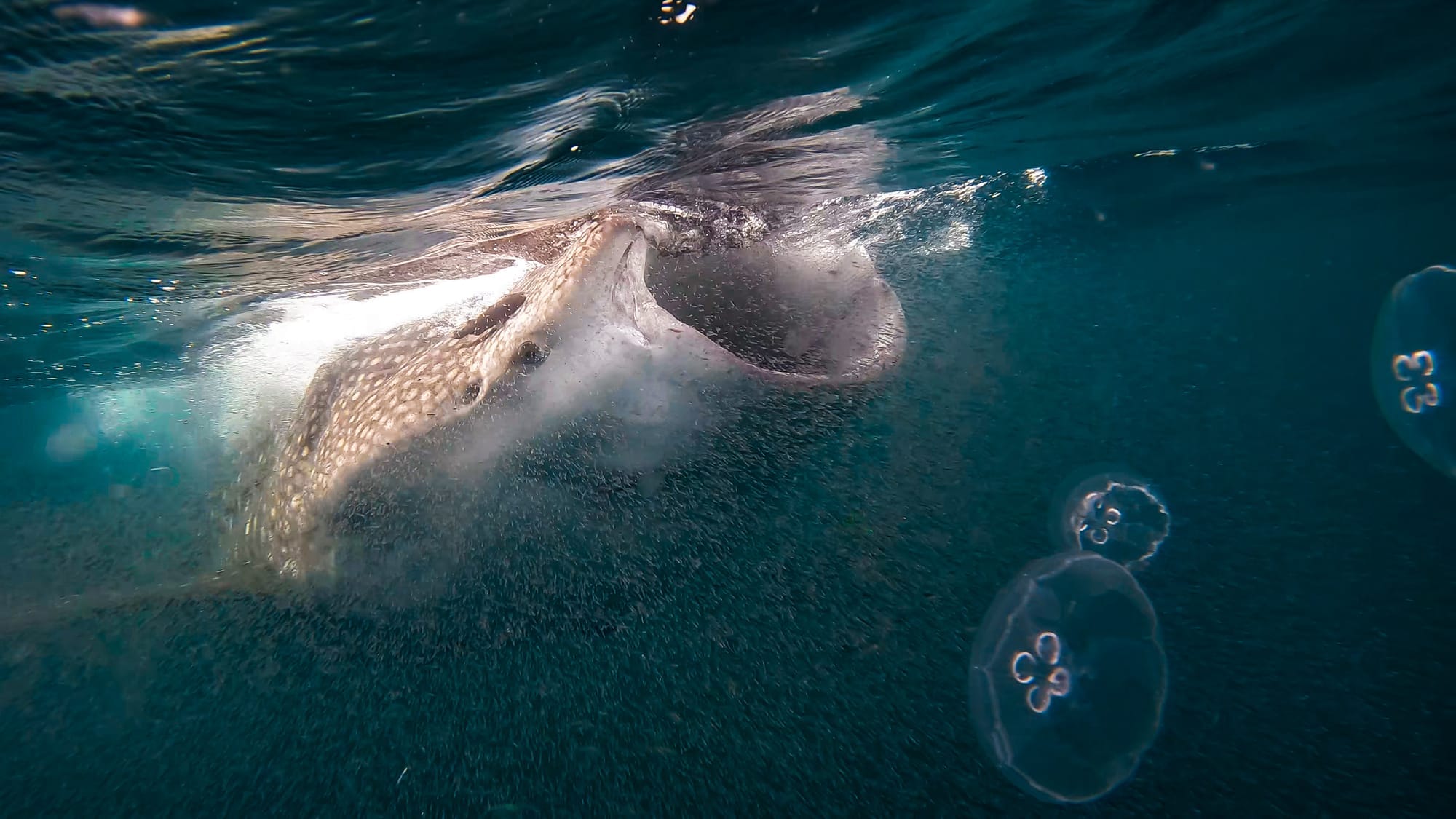How 3D movements of whale sharks are linked with the bio-physical environment
SequeiraLab's PhD student, Ben D'Antonio, celebrates the publication of his first PhD chapter! s) and the bio-physical environment off a coral reef" just published in the journal Movement Ecology. In this paper, Ben used an interdisciplinary approach to assess density, distribution and composition o

The SequeiraLab PhD student Ben D'Antonio celebrates the publication of his first PhD chapter!
Ben led the research paper "Links between the three-dimensional movements of whale sharks (Rhincodon typus) and the bio-physical environment off a coral reef" just published in the journal Movement Ecology. In this paper, Ben used an interdisciplinary approach to assess density, distribution and composition of prey and physical oceanography in the vicinity of whale sharks that were tracked simultaneously using satellite-linked tags at Ningaloo Reef, Western Australia.
The results revealed previously unrecognised complexity between whale sharks and their zooplankton prey. Prey was identified as a critical factor determining the horizontal space use of whale sharks but no relationship was found between whale shark dive patterns and prey distribution. Instead, whale sharks opted to make repeated descents and ascents from the surface through the water column irrespective of the vertical distribution of their prey. By linking prey with the three-dimensional movements of these ocean giants, this research revealed that although prey determines whale shark space use, it was not the sole driver of their dive patterns and sub-surface behaviours while in Ningaloo.
The paper is co-authored by Luciana C. Ferreira, Mark Meekan, Paul G. Thomson, Lilian Lieber, Patti Virtue, Chloe Power, Charitha Pattiaratchi, Andrew S. Brierley, our lab lead Ana Sequeira and Michele Thums. This team of international researchers from the UWA Oceans Institute, Australian Institute of Marine Science, Australian National University, University of Tasmania, CSIRO, Marine Biological Association of the United Kingdom and The University of St Andrews.
Congratulations to Ben for this great achievement and thanks to the team for their support!
